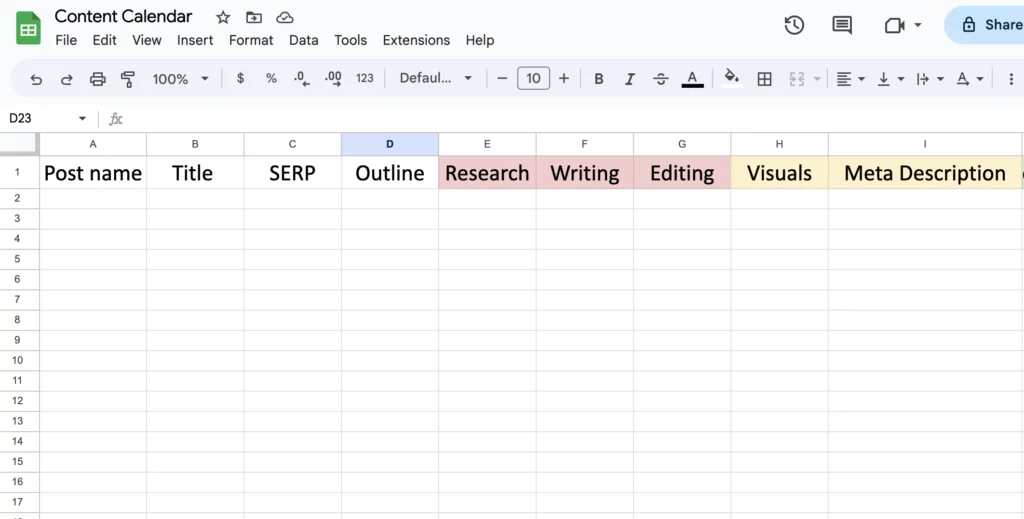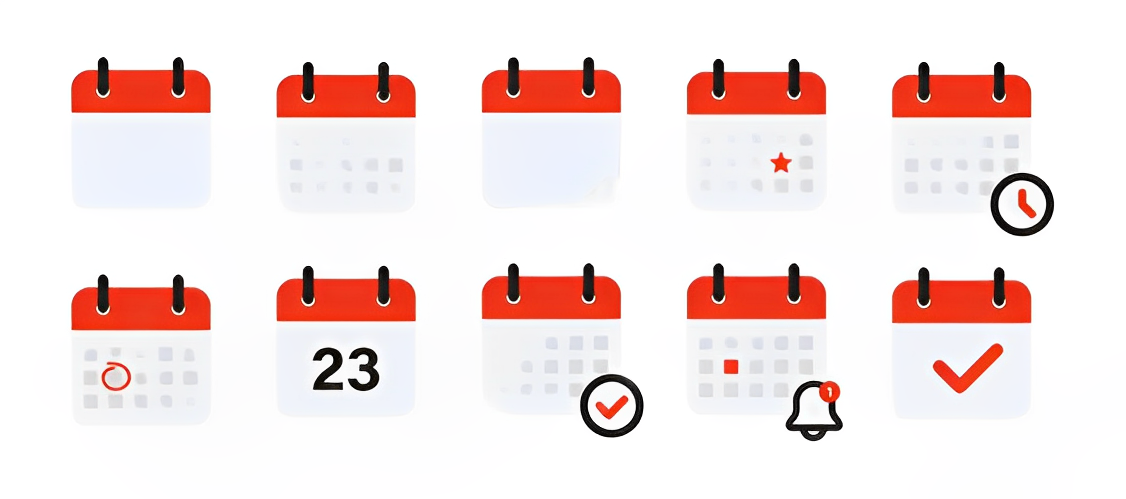A content calendar is exactly what the name suggests. It tracks and manages your content production to ensure your team meets their deadlines.
You can use Jira, Asana, Linear, etc. They’re all great workflow management tools.
That said, I’ve created over 1000+ blog posts and in my experience, combining them with a simple content calendar works best to keep your content on schedule.
And now, I’m going to show you how to create calendar.
Why consulting firms need a content calendar
Before I head into how to create and maintain a content calendar, it’s important you know why you should have a content calendar in the first place.
There’s no better long-term marketing play for consulting firms than blog posts.
I’ve also detailed how content marketing through blog posts can generate a 36x ROI for consulting firms if you need additional convincing.
Consequentially, to be successful with blog posts, you need to publish content consistently, which requires a content calendar.
A content calendar will:
- Help maintain a steady publishing schedule.
- Ensure you and your team are meeting deadlines based on your firm’s top-level marketing goals.
- Provide a clear overview of what’s going on with your content, making it easier to track progress and tweak your strategies accordingly.
On the flipside, if you don’t have a content calendar, you’re going to be inconsistent with your content, which will weaken your brand identity.
Not to mention, the wasted time and effort because of a lack of focus and direction without a content production schedule.
Now that you know how content calendars keep you on track and maintain a consistent content production schedule, let’s get into how you can create one for you or your team.
STEP 1. Be clear about why you're creating a content calendar
Start by deciding what you want to achieve through your content marketing efforts. Do you want:
- raw traffic (never a good idea)
- relevant traffic
- conversions (if so, how do you want them to convert?)
- brand-identity?
You’re posting blogs, people are reading them, they’re trusting and resonating with your words. The money’s basically there on the table, you just need to reach out and take it.
But I don’t want to influence your goals with your content.
So, coming back to my original point, whatever you’re hoping to achieve through content marketing should be what you base your content calendar around.
Your content goals will determine the tasks and schedule of your content calendar.
For instance, let’s say you want to add $300k to your revenue. You look at your average deal size and determine you need 20 new clients to get there.
Then you look at the competitive and industry landscape and determine that 3/5 posts should rank and each post will bring in roughly 800 people in traffic a month.
Then you do some more calculations, conversion rate, etc. and finally conclude you’ll need 20 optimized blog posts to comfortably meet your target of 20 new clients, and you want to get your content out in 3 months.
So, you know you need to publish 6.5 blog posts a month and those posts need to be posts that will convert readers to clients.
You can then get to work creating a calendar that works around this target.
STEP 2. Brainstorm calendar functions and their deadlines
This one is simpler than it sounds.
Once you’re clear on your objective with your content, you need to determine what content functions your calendar needs to achieve that objective.
For example, if your objective with your content was to convert your readers to paying customers your calendar functions might include:
1. Title considerations (is it CTR optimized, is it too long etc.)
2. SERP analysis for your query/topic
3. Content structure/outline
4. Content research
5. Content writing
6. Content editing
7. Custom visuals
8. Meta description, on-page SEO, post slug, etc.
When determining your content functions, you want to make sure you’re leaving no stone unturned to overthrow your competitors in the rankings.
We personally have a 32-point content checklist that we use beat most of our competitors. Which, is probably why you’re reading our article instead of theirs.
Once you’ve selected your content functions, your next step is to add them to a google sheet and actually create your calendar template.
STEP 3. List your functions and create a content process template
The content process template is another name for the content calendar. Content process just more accurately describes how to create it.
To create your content process:
List all your content functions in the first row of Google. Then determine who is going to handle which function and add their name against it.
You can even color-code the different aspects of the content development process, like research, writing, editing, design, etc.
Once you’ve listed your content functions, your calendar is pretty much ready to go. It should look something like this:

All you need to do now is share it with your team members and set deadlines based on your goals in step 1.
Depending on how closely you want to manage the content development, you can either let your team members fill out the sheet autonomously or sub-divide their tasks even further on Asana, Linear, etc.
With that you have a content calendar ready to go.
If you want to accelerate your content production even more, here are a couple more tips for you.
[TIP 1/2] Select your post format before starting your research
Select your post format first and then do your research. Not the other way round.
Unfocused research on a topic can be overwhelming and WILL cost you time.
Some common post formats can be:
1. Listicles
2. How to guides
3. Comparisons between products
4. Case studies
Once you have your post format down, your research becomes more focused.
For example, if you’re researching the topic content marketing, you are researching endlessly, and it can take a few days before you have an actual structure you can put into words.
On the other hand, if you’re researching a listicle titled “Top 10 content marketing influencers in 2023”, you are researching to a specific end. Finding information like this should not take you more than a few hours.
(TIP 2/2) Leverage a content team/agency if you can budget for it
Leveraging an agency or team will put more people on the job, allowing you to shorten the content process timeline.
As an example, when we assign a team to a content creation project, it includes:
1. An SEO Expert
2. A Designer
3. A Content Writer & Editor
Now, you can do all their tasks yourself. There’s nothing stopping from creating your own blog posts.
I’m sure it’s a lot cheaper, but you’re going trade your time and sanity.
It’s tempting to want to create your own blog posts but unless you deeply understand content marketing and SEO, you’ll struggle to get the same results in the same time frame as hiring an agency.
Content marketing through an agency can be expensive, but if you can afford it, the investment is well worth the money.
An agency will yield 3-4x better results in my experience and get the work done in 1/10th of the time.
It’s kind of like if you want a luxury car.
Are you going to buy one from Mercedes-Benz or will you start building it in your garage by reading resources on the internet?
